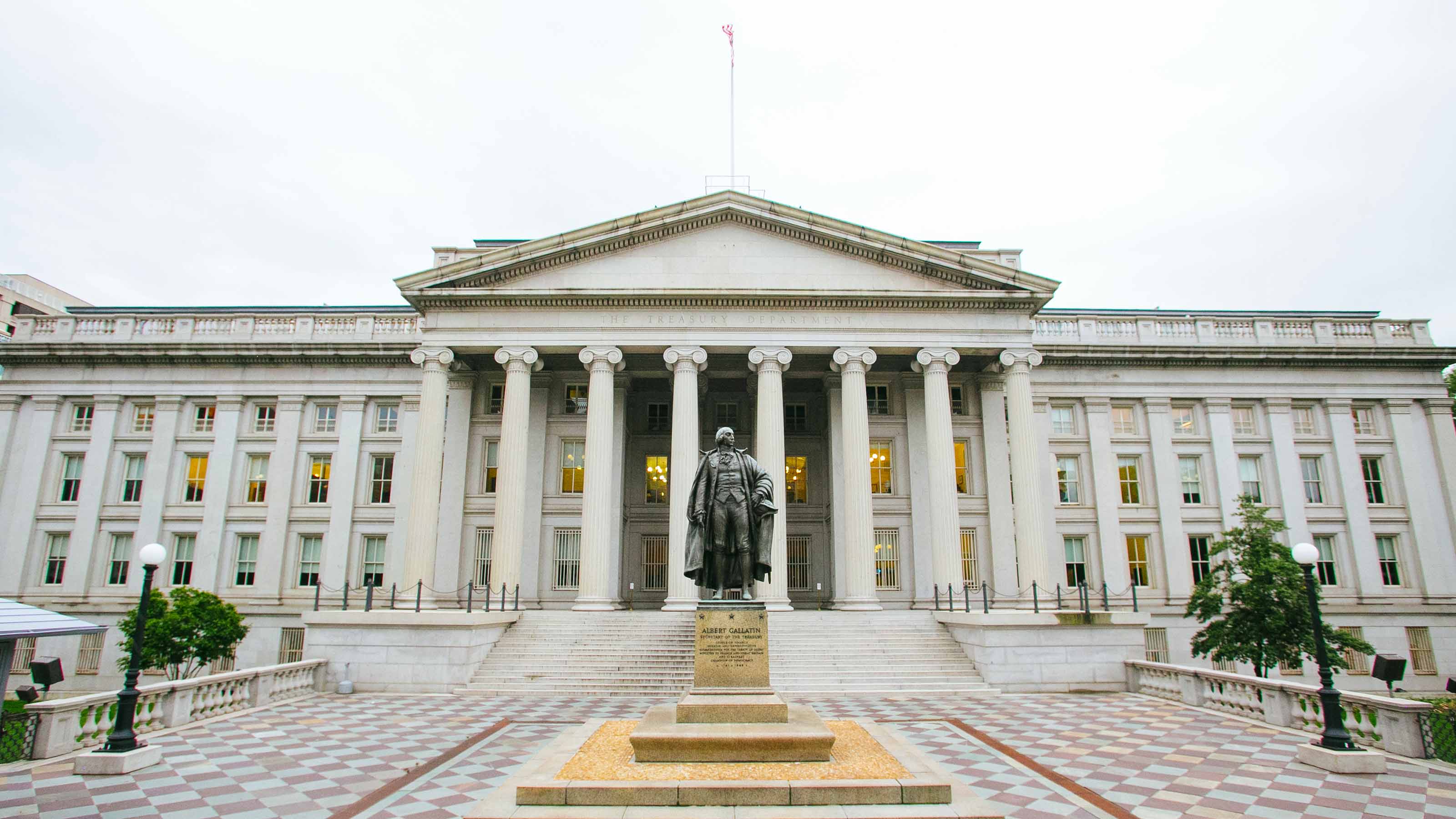Mortgage REIT Madness
Yields on real estate investment trusts that hold mortgages are soaring, but the gains may be an illusion.

The yield figures explode off the screen: 18%, 15.7%, 14%, 13.2%, and on and on. They do go all the way to zero, in fact. These are the current dividend yields among the 30 or so real estate investment trusts that hold loans and mortgages or trade mortgage-backed securities instead of actual property. The question is whether it's time to take a shot or if these yields are a temptation to ruin. The answer: Some of each. But first, some background.
In June 2003, I prophesized in this column that shareholders of mortgage REITs would suffer when short-term and long-term interest rates converged. That's because this business, though not identical at every mortgage REIT, is built on borrowing at short-term rates and lending (or investing in mortgage securities) at long-term rates.
When short-term money is much cheaper than long-term credit, which was true until the Federal Reserve Board started raising rates in June 2004, you could profit mightily off the spread. People made great gushers of income and -- because mortgage REITs are structured as REITs for tax reasons -- passed it along, giving off fat dividend increases. Because the Fed wasn't doing much rate-wise, the stock market, which lives in the present, further rewarded the stockholders with sharply higher share prices.
From just $107.88 $24.99 for Kiplinger Personal Finance
Become a smarter, better informed investor. Subscribe from just $107.88 $24.99, plus get up to 4 Special Issues

Sign up for Kiplinger’s Free Newsletters
Profit and prosper with the best of expert advice on investing, taxes, retirement, personal finance and more - straight to your e-mail.
Profit and prosper with the best of expert advice - straight to your e-mail.
But once the Fed began its rate-hike campaign, the squeeze set in as expected and, in many cases, dividends fell -- or the trusts reached into their capital reserves to keep up the distributions because current earnings didn't cover them.
Consider the ups and downs at perhaps the best-known mortgage REIT, Annaly Mortgage Management (symbol NLY), which sold for $6 in 1998. Three years ago this month, it traded at $20 and paid 60 cents a quarter in dividends, or $2.40 a year, for a 12% yield. Today, Annaly's a little above $13, but it's not the same stock. Instead of a 60-cent dividend, the last three quarters' payouts have been 13, 10 and 11 cents. The high earnings of just a few years ago swung to a loss in 2005. Annaly still yields 5% on a 12-month trailing basis if you count the three months that ended in March 2005, its last high-paying quarter. But by then, the spread between borrowing and lending was eroding -- and so was Annaly's share price.
The market's opinion now changes almost daily on whether the Fed is finished raising short-term rates. There's also disagreement on whether recent upticks in inflation will send longer-term interest rates much higher. So it's possible this spread could widen again, which would be good for any investment that depends on a widening gap between short and long rates. So it's no shock to see Annaly's stock recovering from a low of $11 around the turn of 2005 into 2006, for a total return of 25% so far in 2006 despite the lower dividends. In May, brokerage firm Friedman Billings Ramsey raised 2006 earnings estimates for Annaly from 71 cents a share to 88 cents. Seven investment firms have upgraded their view of the stock since last winter.
Shares of some of Annaly's cousins also are rallying. Novastar Financial (NFI), the REIT with the 18% yield, fell from $70 at its peak in 2004 to $25 earlier this year and is now at $33. New Century Financial (NEW) which at $49 is priced to yield 15%, is up from a bottom of $30 last fall. It had peaked at $61 in early 2005. There are others like this. The REIT organization's index of mortgage REITs shows a total return so far in 2006 of 11.3%, a bit above the 10.5% on the property REITs that analysts and shareholders often describe as continuing to defy gravity. The early 2006 results are surely a surprise after the mortgage REIT index lost 23% in 2005.
So, ladies and gentlemen, is this rebound sustainable? Should you go out and buy New Century or Novastar and figure that once the Fed stops pumping rates it'll be like 2003 all over again? On a conference call with investors last month, New Century's management all but guaranteed that the company will pay $7.30 of dividends this year. That means even if the stock market decides a 10% yield is generous enough, you would have a $73 stock and a total return of better than 50%.
By that score, it looks like a no-brainer to try. But there are cooler heads out there. One is Larry Goldstone, president of Thornburg Mortgage, a REIT that is hands-down more stable than those named above because it is managed conservatively and mostly makes its own mortgages and keeps them. Goldstone acknowledged that if short-term rates do fall and there's once more a three-percentage-point spread, the habitually more excitable mortgage REITs will fly high. But that also depends on whether there are problems with the creditworthiness of their investments. "I'm not a big fan of the subprime sector," he said, which means making loans to borrowers with weak or impaired credit, or of mortgage REITs that depend on ever-increasing loan volume. Marginal borrowers are starting to default in larger numbers and the volume of home sales may be slowing even if housing prices avoid a big drop.
Goldstone didn't single out any subprime mortgage outfits by name, but it's easy to go to the Web sites of any super-high-yield trust and see where it invests. They'll all claim to be better than the next guy at handling the risks, hedging bets and finding ways to earn these high dividends. But unless the Fed really does stop tightening credit soon and the bond market decides mortgage rates have already risen enough, these surprising gains in early 2006 may end up to be just an illusion. Go for it only with money you can afford to lose.
Profit and prosper with the best of Kiplinger's advice on investing, taxes, retirement, personal finance and much more. Delivered daily. Enter your email in the box and click Sign Me Up.

Kosnett is the editor of Kiplinger Investing for Income and writes the "Cash in Hand" column for Kiplinger Personal Finance. He is an income-investing expert who covers bonds, real estate investment trusts, oil and gas income deals, dividend stocks and anything else that pays interest and dividends. He joined Kiplinger in 1981 after six years in newspapers, including the Baltimore Sun. He is a 1976 journalism graduate from the Medill School at Northwestern University and completed an executive program at the Carnegie-Mellon University business school in 1978.
-
 10 Cheapest Places to Live in Washington
10 Cheapest Places to Live in WashingtonProperty Tax Is Washington your go-to ski destination? These counties combine no income tax with the lowest property tax bills in the state.
-
 Healthy to 100: Secrets from Countries Where Retirees Age Best
Healthy to 100: Secrets from Countries Where Retirees Age BestLongevity is a team sport, according to author Ken Stern. Here's the secret sauce for living long, healthy lives from countries like Italy and Japan.
-
 My First $1 Million: Semiretired CPA, 68, San Francisco
My First $1 Million: Semiretired CPA, 68, San FranciscoEver wonder how someone who's made a million dollars or more did it? Kiplinger's My First $1 Million series uncovers the answers.
-
 The Most Tax-Friendly States for Investing in 2025 (Hint: There Are Two)
The Most Tax-Friendly States for Investing in 2025 (Hint: There Are Two)State Taxes Living in one of these places could lower your 2025 investment taxes — especially if you invest in real estate.
-
 The Final Countdown for Retirees with Investment Income
The Final Countdown for Retirees with Investment IncomeRetirement Tax Don’t assume Social Security withholding is enough. Some retirement income may require a quarterly estimated tax payment by the September 15 deadline.
-
 Why Investors Needn't Worry About U.S. Credit Downgrade
Why Investors Needn't Worry About U.S. Credit DowngradeFitch Ratings The United States saw its credit rating downgraded for just the second time in history, but experts aren't worried about the long-term damage to stocks.
-
 Income-Investing Picks for a Recession
Income-Investing Picks for a RecessionInvesting for Income Some consequences of an economic downturn work to the benefit of fixed-income investors. Here are three fund ideas that fit the bill.
-
 Dogs of the Dow Are 2022's Best in Show
Dogs of the Dow Are 2022's Best in Showdividend stocks Some of the best investments for income investors in a volatile 2022 have come from the Dogs of the Dow.
-
 Bond Values in a Volatile Market
Bond Values in a Volatile MarketInvesting for Income While the market's instability may not be over just yet, the latter half of the year should be less daunting – and possibly more rewarding – for investors.
-
 Should You Buy Bonds Now? What To Consider
Should You Buy Bonds Now? What To Considerbonds The fixed-income market has been turned on its head in recent years, but there are still opportunities for those looking to buy bonds again.
-
 Dividend Dates: A Beginner's Guide
Dividend Dates: A Beginner's Guidedividend stocks Everything you need to know about ex-dividend dates, dividend announcements and other parts of the dividend calendar.